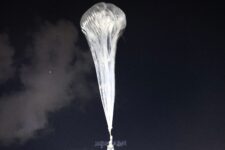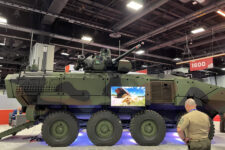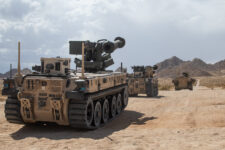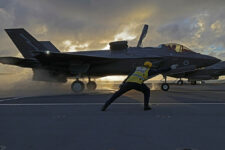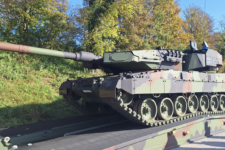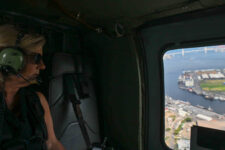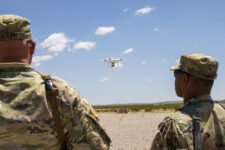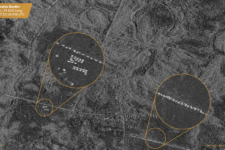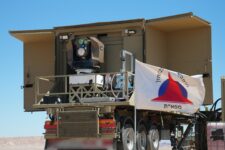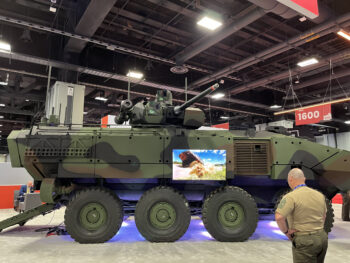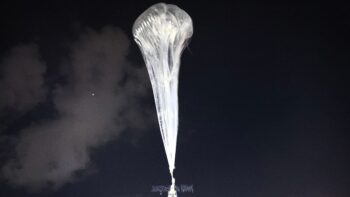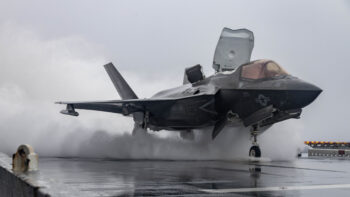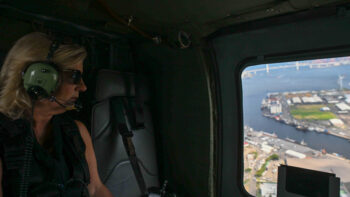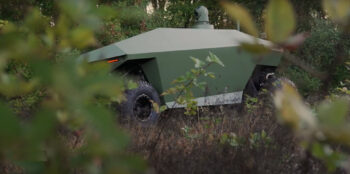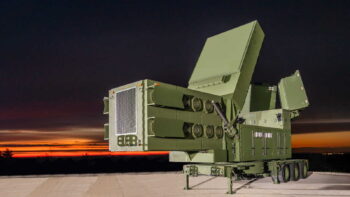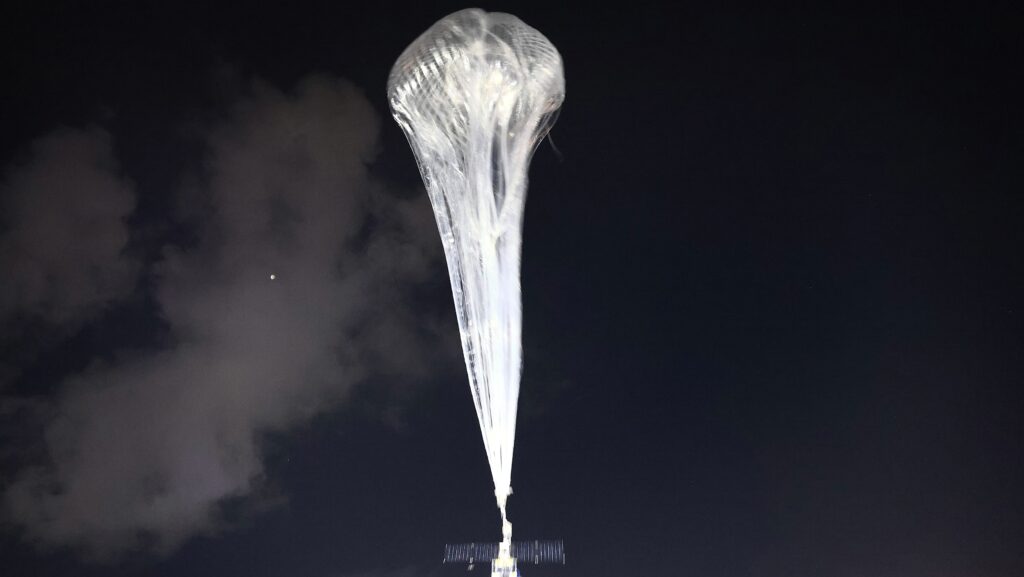
The 3D Multi-Domain Task Force, in conjunction with the Office of the Undersecretary of Defense, launched High-Altitude Balloons (HABs) from Won Pat International Airport in Guam on June 10, 2024. (US Army photo by Sgt. Perla Alfaro)
WASHINGTON — As the US Army contemplates floating extremely high-flying balloons into the stratosphere for a variety of missions, service space officials suggested recently that one of those missions might be carrying and launching drones that would disrupt or destroy enemy space assets on the ground, like jammers or satellite control stations.
Col. Donald Brooks, commander of the Army’s 1st Space Brigade, told the annual Association of the US Army conference earlier this month that the service will have “multi-form factor balloons operating at various altitudes, executing different mission sets, ultimately increasing the target problem set and dilemma for our adversaries, which directly supports the Army and [Defense Department] resiliency efforts and makes us more lethal.”
The balloons are envisioned as aiding in “deep sensing and support long-range precision fires, enable navigation warfare, provide network extension via voice and data, enable assured access to PNT — our position navigation and timing — and have both lethal and non-lethal payloads.”
But, as a senior Army space official, Brooks also said the Army is “integrating high-altitude platforms with the ability to reconstitute, augment and surge space effects, if and when our adversary interferes with our freedom of access and movement maneuver in the space domain.”
A chart shown during his presentation offered more detail, depicting drone-dropping balloons for missions deep into enemy territory and apparently targeting terrestrial space assets.
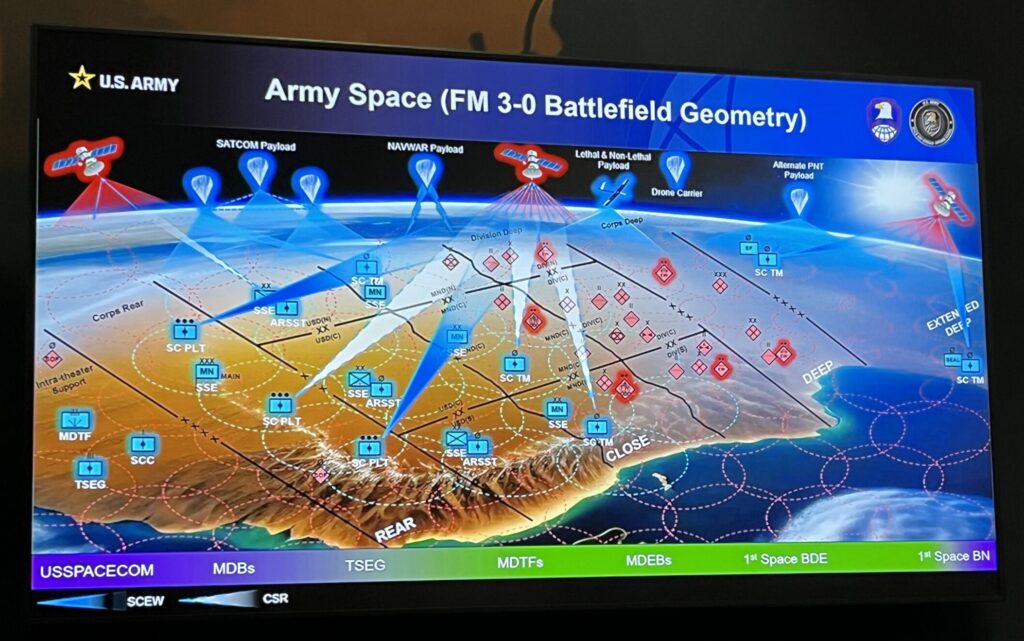
An Army graphic shown during an Oct. 15 AUSA presentation by Commander of the 1st Space Brigade Col. Donald Brooks. (Photo: Theresa Hitchens/Breaking Defense)
Comparing the idea to “Russian stacking dolls,” Andrew Evans, director of the Army’s Intelligence, Surveillance and Reconnaissance (ISR) Task Force, told Breaking Defense on Oct. 16 that “the concept of having a balloon drop something else is not new.”
The Army, he explained, is looking at a number of potential payloads that could be dropped from balloons, as well as other types of high-altitude platforms.
“So, the idea would be that if we do successfully exploit the stratosphere, which we will do eventually … it won’t be exclusive to a sensing mission, it won’t be exclusive to an [intelligence] mission, it won’t be exclusive to a comms relay mission. It’ll be all of the above, in a variety of different forms and factors. … [W]e’ll probably fly decoys as well,” Evans said.
“That’s how you win, I think, in the future, is that you deliver multiple different payloads in multiple different ways for different missions,” he added
At the moment, however, there isn’t any formal Army solicitation to industry for employing counterspace drones launched from high-altitude platforms of any sort — whether those be balloons, crewed aircraft, bigger drones or helicopters, according to a service spokesperson. Rather, a number of different Army organizations across mission areas and within Army Futures Command are involved in experiments to test out potential applications.
“The Army is considering applications in which high-altitude platforms employ launched effects, aiding in the ability to see and sense further. Currently, there is no formal RFP [request for proposal] or RFI [request for information] for launched effects from a high altitude platform. However, the Army continues to learn more from its experiments and Soldier feedback about the unique potential military capabilities these platforms could provide,” the spokesperson said Oct. 25.
“Launched effects” is the Army term of art for small drones that shoot out of something else mid-flight to collect info or strike targets, and the service is studying a number of options for short-, medium- and long-range missions.
Crew safety for units under armor: Accurate sensors are the key
Ground platform situational awareness is critical as vehicle crew survivability depends upon it.
